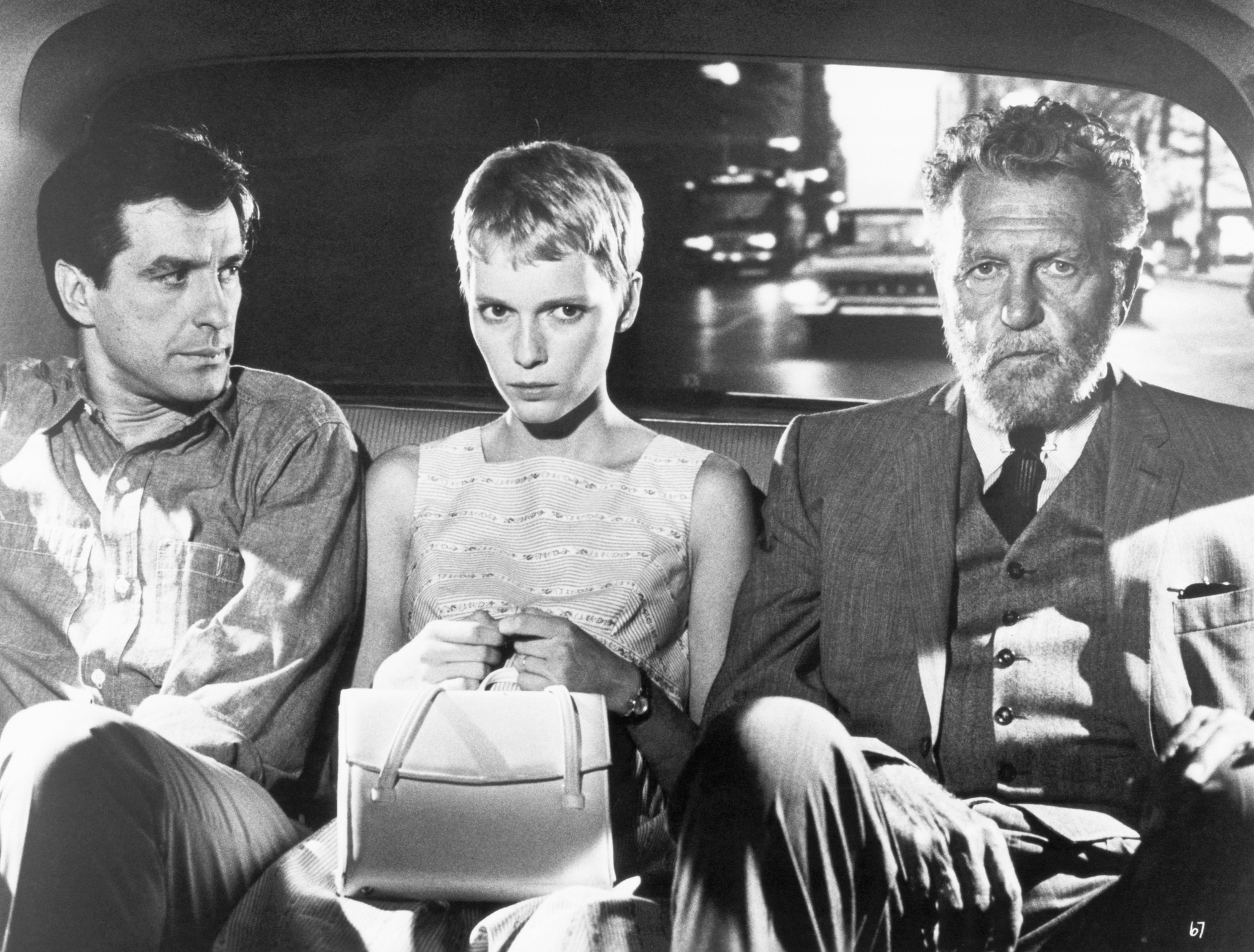Rosemary’s Baby (1968)

“Rosemary’s Baby,” directed by Roman Polanski and released in 1968, stands as a seminal work in the horror genre, renowned for its chilling atmosphere, psychological depth, and exploration of supernatural themes. Adapted from the novel by Ira Levin, the film follows the unsettling journey of Rosemary Woodhouse, a young woman who becomes increasingly paranoid as she unravels a sinister conspiracy surrounding her pregnancy.
Set in New York City during the 1960s, the film introduces us to Rosemary, played by Mia Farrow, and her husband, Guy Woodhouse, portrayed by John Cassavetes. The couple moves into an old and eerie apartment building known for its mysterious past. Their seemingly idyllic life takes a dark turn when Rosemary becomes pregnant under unusual circumstances. As her pregnancy progresses, Rosemary experiences disturbing symptoms and visions, leading her to suspect that her neighbors, particularly the eccentric couple next door, Minnie and Roman Castevet, played by Ruth Gordon and Sidney Blackmer, are involved in a malevolent plot involving her unborn child.

One of the film’s strengths lies in its atmospheric cinematography and minimalist approach to horror. Roman Polanski’s direction emphasizes suspense and psychological tension over graphic violence, creating a sense of unease that permeates every scene. The use of shadowy lighting, claustrophobic settings, and unsettling camera angles enhances the film’s sense of dread, evoking a mood of paranoia and isolation that mirrors Rosemary’s own psychological turmoil.
Moreover, “Rosemary’s Baby” delves deep into themes of paranoia, motherhood, and the loss of control. Rosemary’s journey is not just a physical one but a psychological descent into madness as she grapples with the implications of her pregnancy and the growing realization that those closest to her may have sinister intentions. The film explores the vulnerability of pregnancy and the fears associated with motherhood, portraying Rosemary’s desperation and isolation amidst a world that seems increasingly hostile and manipulative.

In addition to its psychological horror elements, “Rosemary’s Baby” features nuanced performances that contribute to its enduring impact. Mia Farrow delivers a haunting portrayal of Rosemary, capturing her transformation from a naive and trusting wife to a woman consumed by fear and suspicion. John Cassavetes portrays Guy with a complex blend of charm and ambiguity, leaving audiences questioning his true motives and involvement in the unfolding conspiracy.
Furthermore, the film’s score, composed by Krzysztof Komeda, enhances the atmosphere with its haunting melodies and minimalist approach. The music underscores the film’s sense of unease and impending dread, complementing Polanski’s direction and amplifying the emotional and psychological turmoil experienced by Rosemary.

Critically acclaimed upon its release, “Rosemary’s Baby” received praise for its innovative approach to horror and its exploration of taboo themes. The film’s success paved the way for a new wave of psychological horror films that focused on suspense, atmosphere, and the complexities of human psychology. It remains a cultural touchstone, influencing subsequent generations of filmmakers and establishing itself as a timeless classic in the horror genre.
In conclusion, “Rosemary’s Baby” (1968) stands as a masterclass in psychological horror, blending atmospheric cinematography, nuanced performances, and thought-provoking themes to create a deeply unsettling and unforgettable cinematic experience. As Rosemary confronts the supernatural forces conspiring against her, the film invites viewers into a world where reality and nightmare intertwine, leaving them questioning the true nature of evil and the limits of human perception.











